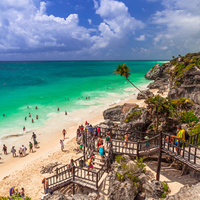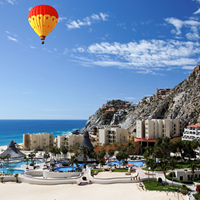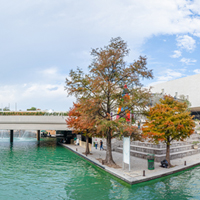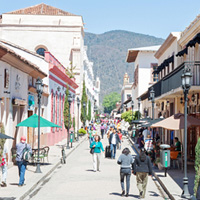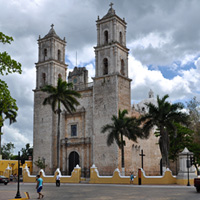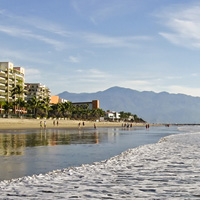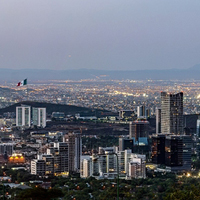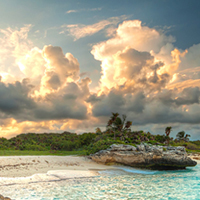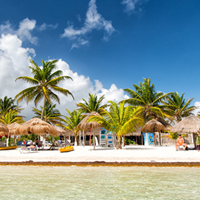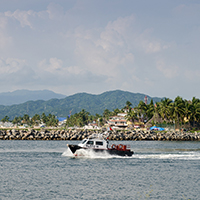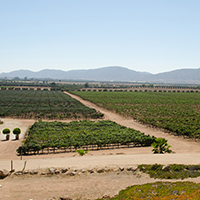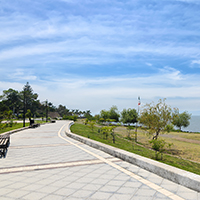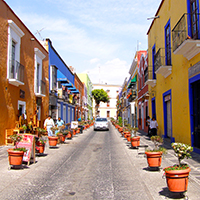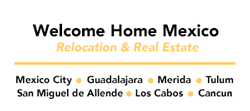Mexico
Coastal BeachesMexico is a country rich in culture, history, and natural beauty, located in the southern portion of North America. It is bordered to the north by the United States, to the south and west by the Pacific Ocean, to the southeast by Guatemala, Belize, and the Caribbean Sea, and to the east by the Gulf of Mexico. With a diverse landscape that includes deserts, high plains, and mountains, Mexico is known for its varied climates and ecosystems. The country's history is a tapestry woven from indigenous civilizations such as the Maya and the Aztecs, and the influence of Spanish colonialism, which is evident in its architecture, cuisine, and traditions. Mexico's capital, Mexico City, is one of the largest metropolitan areas in the world and is rich in cultural heritage, with landmarks like the Plaza de la Constitución and the ancient city of Teotihuacan. The country's economy is one of the largest in Latin America, with significant contributions from manufacturing, oil production, and tourism. Mexican cuisine, recognized for its flavors and diversity, is a UNESCO Intangible Cultural Heritage of Humanity. Festivals such as Dia de los Muertos (Day of the Dead) and the vibrant music and dance traditions, like mariachi, reflect the country's strong sense of identity and community. Mexico's tourism industry is bolstered by its beautiful beaches, such as those in Cancun and the Mayan Riviera, as well as by historical sites like Chichen Itza and Tulum. Despite challenges such as economic inequality and political corruption, Mexico continues to be a country of incredible resilience and pride, with a growing role in global affairs and a population that is a blend of indigenous and mestizo (mixed indigenous and European) heritage. The nation's art, from the murals of Diego Rivera to the paintings of Frida Kahlo, captures Mexico's revolutionary spirit and rich traditions, making it a country of both historical significance and contemporary appeal.
 Dream Pro Homes Luxury
Dream Pro Homes LuxuryConnect
Dream Pro Homes Luxury owner Greg Gunter is the Broker for Berkshire Hathaway HomeServices offering luxury home options in the UNESCO city of San Miguel de Allende, Mexico, rated the No. 1 City in the World five years running from Conde Nast Traveler and Travel & Leisure magazines.
Click connect to have our partner contact you via e-mail and/or phone.
 Dream Pro Homes Luxury
Dream Pro Homes LuxuryDream Pro Homes Luxury owner Greg Gunter is the Broker for Berkshire Hathaway HomeServices offering luxury home options in the UNESCO city of San Miguel de Allende, Mexico, rated the No. 1 City in the World five years running from Conde Nast Traveler and Travel & Leisure magazines.
Connect
Click connect to have our partner contact you via e-mail and/or phone.
Podcasts
Episode 5: The Dream Pro of San Miguel de Allende, Mexico
Living in Mexico
Best Places to Live in Mexico
Visa & Residency
Obtaining a residency in Mexico is a process that can be straightforward if the applicant meets the necessary requirements and follows the steps diligently. There are primarily two types of residency visas: the Temporary Resident Visa and the Permanent Resident Visa. The Temporary Resident Visa is suitable for those who wish to stay in Mexico for more than six months but not longer than four years. It is popular among expats who are not yet ready to commit to permanent residency. To apply for this visa, one must visit a Mexican consulate abroad. The applicant will need to provide proof of sufficient economic means to support themselves, or they must show that they are employed or have a job offer in Mexico. The Permanent Resident Visa is for those who intend to settle in Mexico indefinitely and is often sought by retirees or those with family in Mexico. To qualify, applicants must meet stricter financial requirements or have certain family connections with Mexican citizens or other permanent residents. The application process for the Permanent Resident Visa is similar to that of the Temporary Resident Visa, but with additional documentation required to prove the applicant's long-term economic solvency or family ties. The difficulty of the process can vary based on individual circumstances, such as the applicant's nationality, financial situation, and the specific requirements of the Mexican consulate where the application is submitted. Generally, the process is considered average in terms of difficulty when compared to other countries. It is important to note that all documents must be translated into Spanish and apostilled or legalized, depending on the country of origin. Once the visa is approved, the applicant will receive a visa sticker in their passport, which must be exchanged for a resident card within 30 days of entering Mexico at the nearest office (Instituto Nacional de Migración). The process involves submitting various forms, taking photographs, and possibly attending an interview. Overall, while there are several steps to follow, the process is well-documented and can be navigated with patience and careful preparation.
Healthcare in Mexico
The healthcare system in Mexico is a mix of public and private services. The public healthcare system is made up of institutions like the Mexican Social Security Institute (IMSS) and the Institute for Social Security and Services for State Workers (ISSSTE), which provide services to employed citizens and their families. There is also Seguro Popular, a government-subsidized program aimed at providing healthcare to those not covered by IMSS or ISSSTE. The quality of public healthcare can vary significantly, with urban areas typically having better facilities and more resources than rural areas. Private healthcare in Mexico is known for its high quality and is often used by those who can afford it or have private insurance, including expats and digital nomads. Private hospitals and clinics are generally well-equipped and staffed with English-speaking doctors. The cost of private healthcare is lower compared to that in the United States, but it can still be expensive for locals. Expats and digital nomads can gain access to public healthcare by contributing to the social security system through formal employment or by directly purchasing health insurance plans from providers like IMSS. However, many expats and digital nomads opt for private health insurance to ensure access to private hospitals and clinics.
Cost of Living
The cost of living in Mexico can be considered moderate, with expenses varying significantly between urban and rural areas, as well as tourist destinations. Basic goods and services are generally affordable, but imported items and luxury goods can be expensive.
Weather
Mexico's climate varies from arid to tropical, with a temperate climate prevailing in the central regions. The country experiences a rainy season from May to September and a dry season from October to April. Coastal areas are typically warmer and more humid, while higher elevations, such as Mexico City, have a milder climate with cooler temperatures year-round.
Educational System in Mexico
The educational system in Mexico is overseen by the Secretariat of Public Education. It is mandatory for children to attend school from the age of four to fifteen, which includes three levels: pre-school (preescolar), primary (primaria), and lower secondary (secundaria). Pre-school, for children aged 4-6, is the first stage and focuses on physical, emotional, social, and cognitive development. Primary education lasts for six years, typically for children aged 6-12, and covers basic education. Following this, lower secondary education, or middle school, lasts for three years, usually for students aged 12-15. Upper secondary education (educación media superior), which is not mandatory, includes diverse options such as general upper secondary school (preparatoria), technical professional education (profesional técnico), and technological baccalaureate (bachillerato tecnológico). Students typically start this level at the age of 15 and complete it by 18. The quality of education in Mexico varies significantly across regions and socioeconomic levels, with private schools generally offering higher quality education but at a higher cost. Public education is free, but schools may have limited resources. The academic year runs from September to June, and the curriculum includes Spanish, mathematics, natural sciences, history, arts, and physical education.
Universities in Mexico
The university system in Mexico is diverse, comprising public and private institutions that offer a wide range of undergraduate and graduate programs. Public universities, such as the National Autonomous University of Mexico (UNAM), are highly regarded and often heavily subsidized by the government, making them an affordable option for higher education. Private universities, on the other hand, can be quite expensive. Undergraduate degrees (licenciatura) typically take four to five years to complete, while technical degrees (técnico superior universitario) may take two to three years. Graduate programs, including master's (maestría) and doctoral (doctorado) degrees, vary in length depending on the field of study. Admission to universities can be competitive, especially for public institutions, which may require an entrance exam. The academic year is usually divided into two semesters, and the language of instruction is predominantly Spanish, although some programs may be offered in English. For international students, it is important to verify the accreditation of the chosen institution and program, as well as to consider the cost of living in addition to tuition fees. Scholarships and financial aid options may be available to help offset costs.
Copyright 1997-2025 Burlingame Interactive, Inc.

